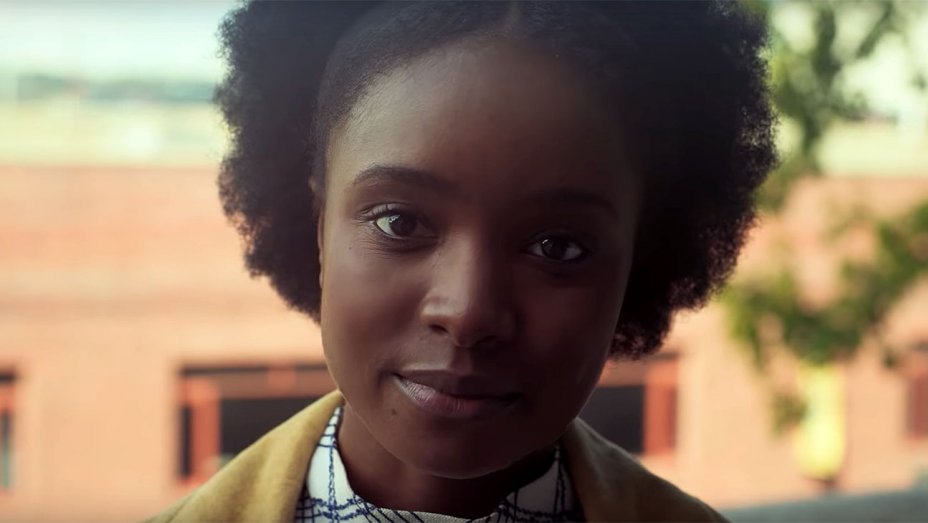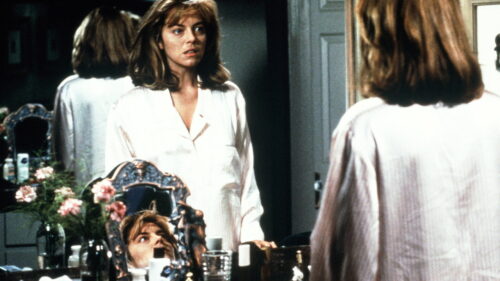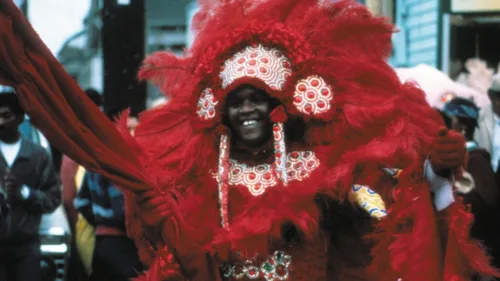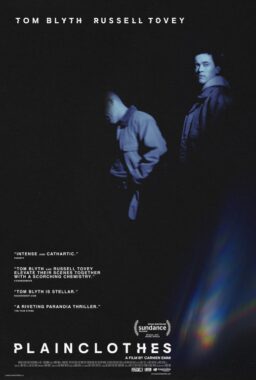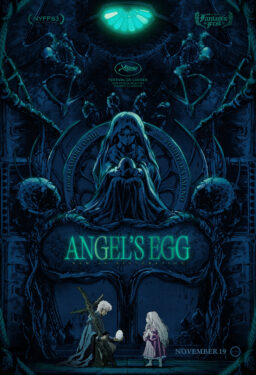“I hope that nobody has ever had to look at anybody they love through glass.” That’s the first sentence spoken in voice-over by Tish (KiKi Layne), the heroine and narrator of Barry Jenkins’ third movie, “If Beale Street Could Talk,” based on James Baldwin’s 1974 novel. She’s referring to her boyfriend and the father of her unborn child, Fonny (Stephan James), who’s been jailed on a rape charge. But she’s unwittingly describing the sensation of watching this and other films: maybe we don’t see movie characters through glass, but the projector does, and as the story unfolds, we’re watching them through a kind of magic window—or as the founder of this site has described it, a machine that generates empathy.
And what’s most remarkable about the movie, aside from its sheer physical beauty and intense yet restrained performances, is how Jenkins democratizes the story, adopting one character’s point-of-view and then another, in different sections of the movie, and often within individual scenes. “Beale Street” jumps around in time, showing the couple during the early intoxications of courtship and then switching over to the present-tense story of spiraling heartbreak. At first we think it’s going to be Tish’s film exclusively, and for a while, it is.
Then it becomes Fonny’s for a bit, and within the Fonny portion, Jenkins carves out space for a lovely, long monologue by Fonny’s friend Daniel Carty, who recently got out of jail and is haunted by his experience. Tish’s parents, Sharon and Joseph (Oscar-winner Regina King and Colman Domingo) and her sister, Ernestine (Teyonah Parris) all get their turns in the spotlight, as do Fonny’s judgmental, super-religious mother (Aunjanue Ellis) and her irreligious husband (Michael Beach) who casually decks his wife during a confrontation in plain view of all the others.
Sharon practically gets a film-within-a-film when she goes to Puerto Rico to track down and confront Fonny’s accuser Victoria Rogers (Emily Rios); this section gives King the Pedro Almovodar-level, sexy-older-movie-star entrance that she’s somehow never gotten until this point in this point in her career (she walks straight into the camera haloed in bright light and tropical color, as if arriving from the Glamour Dimension). “Beale Street” even refuses to demonize Victoria, instead painting her as a young woman who endured two assaults: the rape and the secondary violation of being forced by an abusive beat cop (Ed Skrein) who had a grudge against Fonny to falsely identify him. Pressured by Sharon to admit that Fonny wasn’t her assailant, Victoria seems to withdraw into herself, then screams and screams.
It’s remarkable how even characters who commit unforgivable sins are photographed with nearly the same reverence as characters who are coded as kindhearted, supportive, and “nice.” Jenkins hasn’t made a religious epic yet. But on the basis of this and “Moonlight“—which had a similarly benevolent gaze, and a similarly fleet-footed ability to dance through time—he could direct one of the greatest Jesus movies ever. The way he looks at people is the way Christ spoke in the Gospels—seeing the good in everyone, even when it was buried under layers of indifference or cruelty. Even the way the film looks into the cop’s eyes suggests an awareness of dormant decency.
You can tell by how Barry Jenkins photographs faces that he loves people. Not just the head-on, almost fourth wall-breaking closeups that he’s known for (and that one of his heroes, Jonathan Demme, perfected), but also the profile shots, framed from forehead to chin, and the occasional tighter shots of specific features: a pair of eyes, or one eye, or an upper lip. The background is out of focus. Sometimes parts of the face are, too. In some shots, only the eyes and mouth are in focus—as if to say that they are the only part of the frame that matters, at least for that instant; the only thing we should be looking at; the only thing we want to look at.
It’s not just a voyeuristic impulse, although there’s a touch of voyeurism to it. It’s more benevolent than what we get from most voyeurs. There’s spiritual communion in the spying, a literalization of the idea that eyes are windows to the soul. To stare into another person’s eyes—or to be a filmmaker or photographer staring at a subject who’s staring back at them, and therefore at us—is a shockingly intimate act. It carries with it an unspoken pact between subject, filmmaker and audience: that we’ll see a human being in front of us, not a symbol or a joke. That we’ll look into the person’s face, into their eyes, and really see them.

